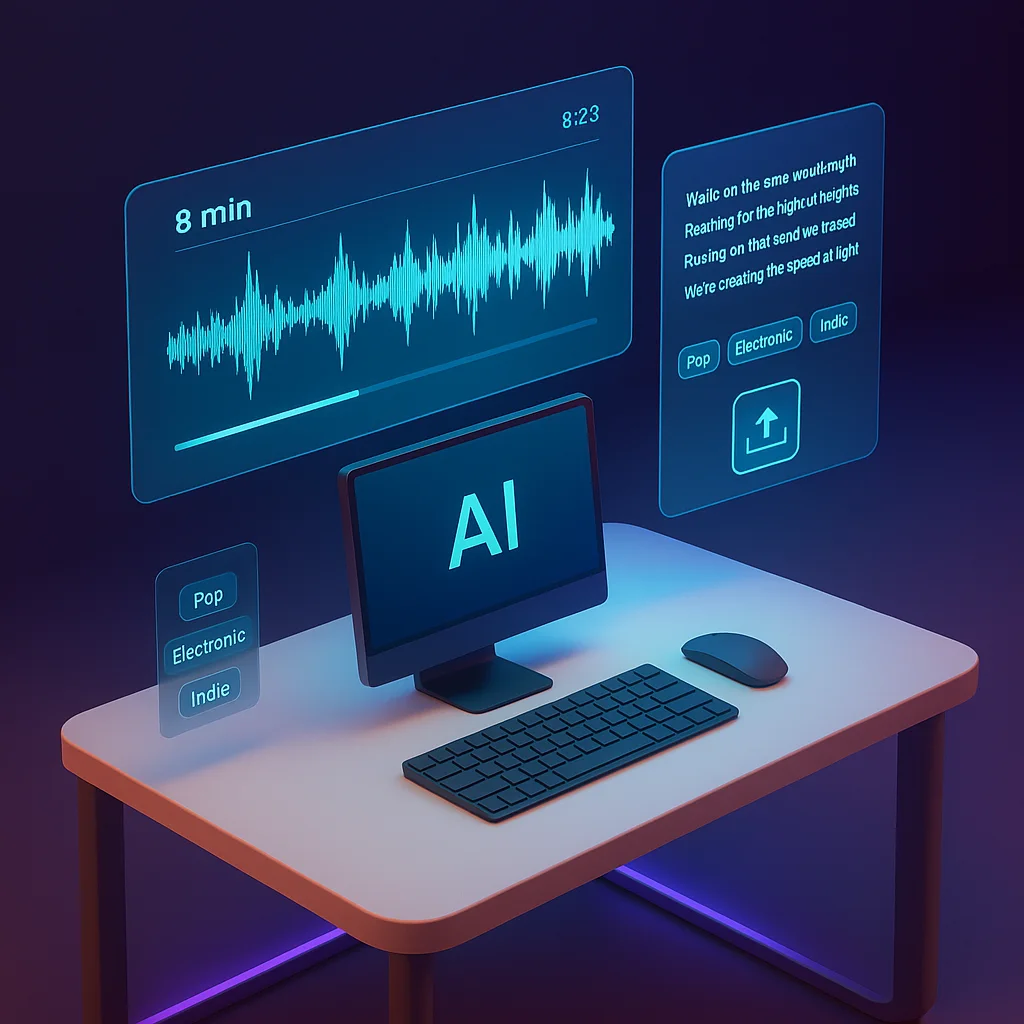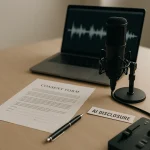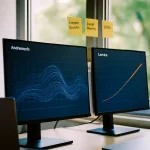Table of Contents
- What Is Suno AI in 2025?
- Suno v4.5 Features: What’s New and What Works
- Pricing and Credits: What You Actually Pay
- Rights, Ownership, and Commercial Use
- How to Use Suno AI (Step‑by‑Step)
- Prompt Hygiene & Rights
- Sound Quality and Generation Stability in 2025
- Ethics, Risk, and Where AI Music Policy Is Headed
- Who Should Choose Suno in 2025?
- Pricing in Practice (Real‑World Scenarios)
- My Bottom Line for You
- Sources & References
Margabagus.com – Riffs used to start in a garage; today they begin in a browser window that feels like a lightweight DAW. If Blade Runner painted a neon cityscape, Suno v4.5 paints studio‑grade songs out of text prompts and scraps of melody—fast enough for your next launch video, precise enough for discerning listeners. In 2025, Suno lifts the ceiling to ~8‑minute tracks, improves lyric handling, and refines long‑form coherence. In this review, I’ll walk you through features, pricing, rights, and how you can get reliable results—clearly, factually, and with practical advice.
What Is Suno AI in 2025?
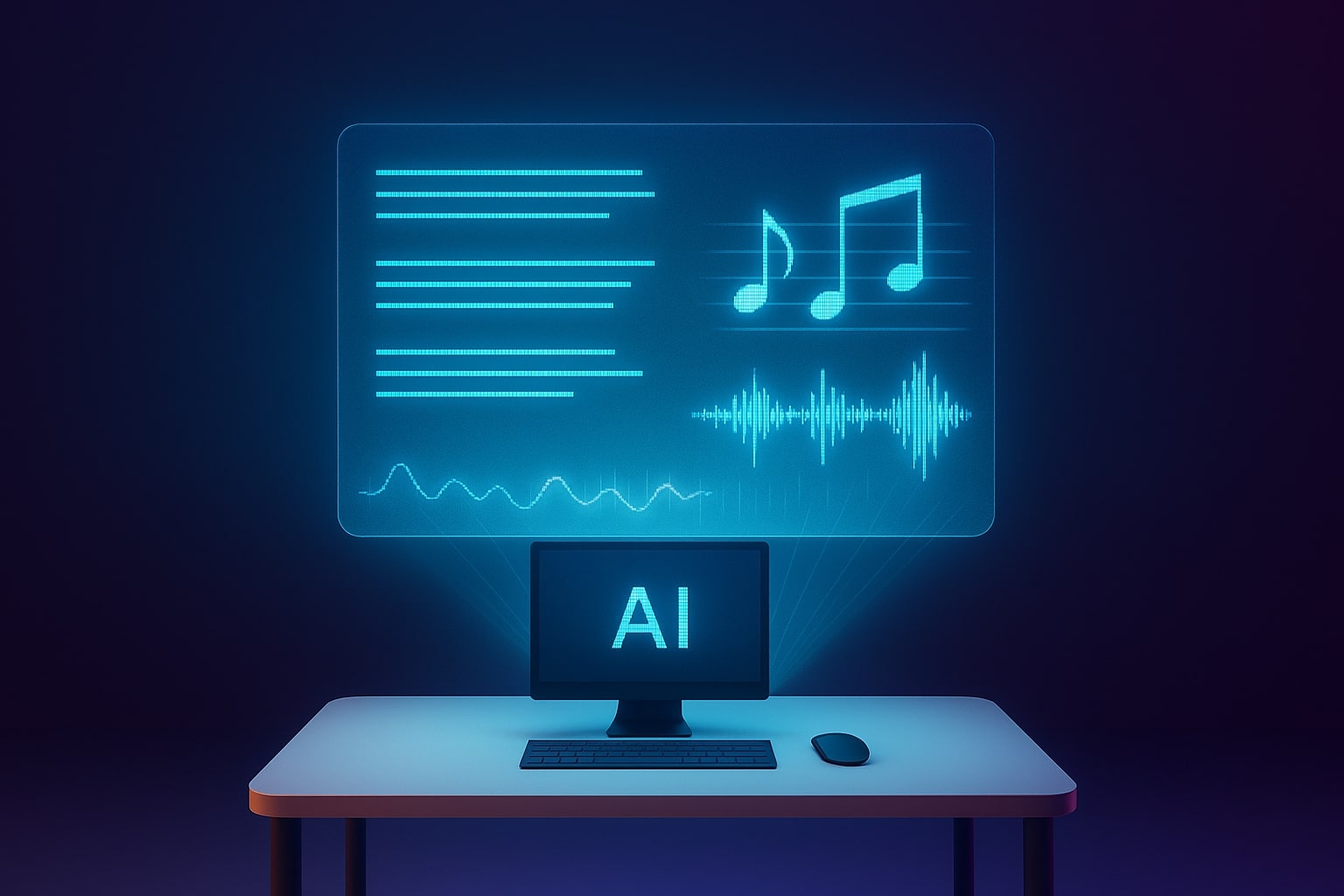
From text or audio snippets to full songs—Suno turns ideas into tracks. Image create with Microsoft Copilot.
Suno is a text‑to‑music platform that generates full songs (vocals and instruments) or pure instrumentals from prompts. I use it when you need consistent, on‑brand beds for explainers, ads, or games without booking a studio. The 2025 update centers on cleaner mixes, smarter lyric adherence, and longer song forms that fit video timelines.
Key takeaways for you: Suno compresses production cycles from days to minutes, keeping creative direction in your hands via prompts, lyric boxes, and light in‑app edits. It’s especially useful when you’re operating under startup timelines and need repeatable quality.
Check out this fascinating article: Udio vs Suno 2025: Complete AI Music Generator Comparison
Suno v4.5 Features: What’s New and What Works
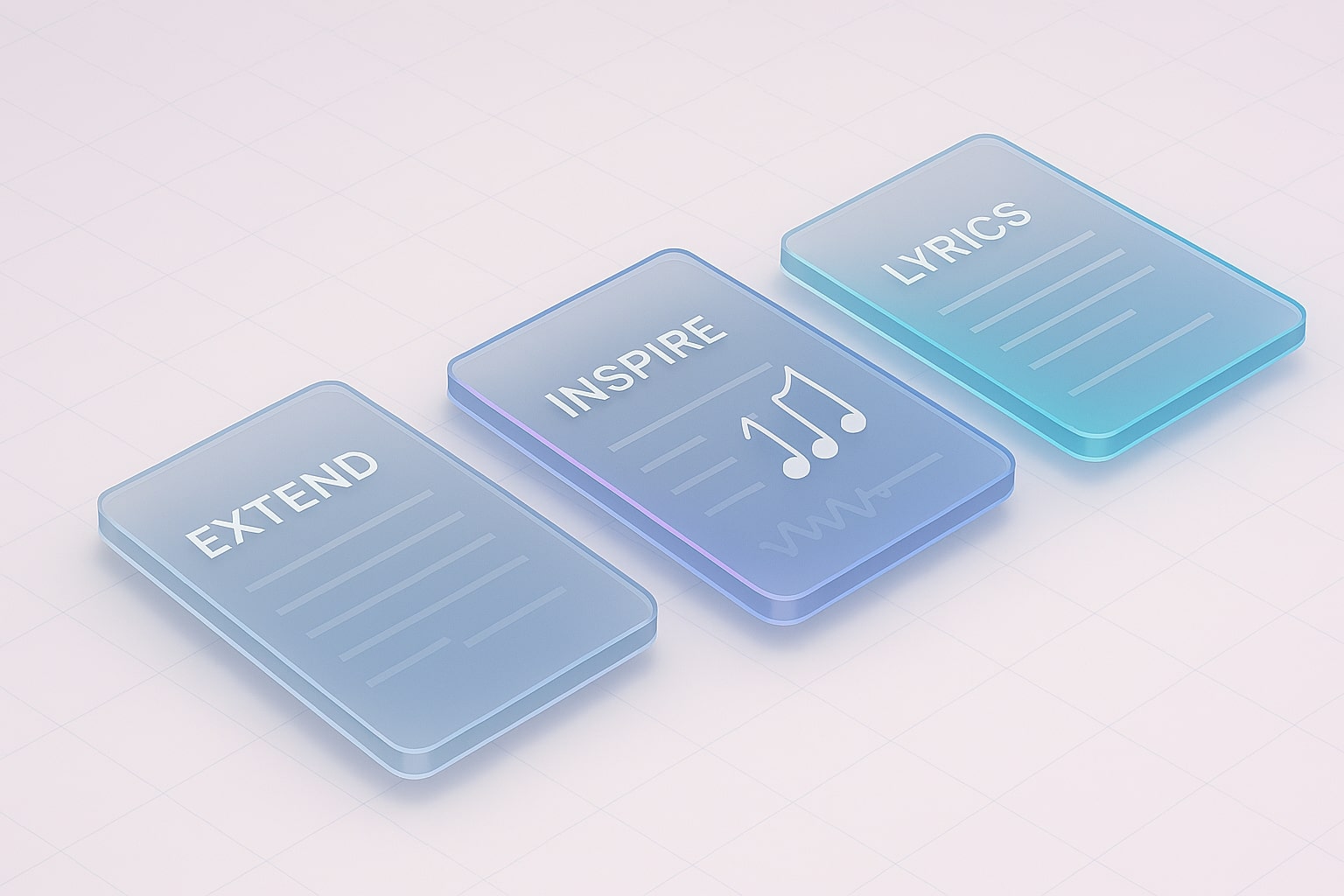
v4.5 expands length, improves lyrics, and enhances prompt control. Image create with Microsoft Copilot.
Suno v4.5 builds on v4 with meaningful upgrades you’ll notice on first render. The headline is extended song length—up to roughly eight minutes in a single pass—alongside faster generation. For narrative content and product demos, those longer forms reduce stitching and looping.
Highlights that matter:
- Extended length up to ~8 minutes with better section coherence for long videos and trailers.
- Smarter prompt interpretation (more conversational prompts now work well) and a helper to enrich style details when you need guidance.
- Lyrics improvements via the dedicated Lyrics box; stronger story beats and rhyme adherence.
- Audio‑to‑Song (upload a hum, riff, or sonic logo) to build around your motif.
- Practical editing aids: Inspire, Add Vocals, Instrumental toggle, Crop/Replace Section, and Extend—handy for shaping structure without leaving the browser.
Why you care: the v4.5 feature set finally makes single‑generation long cues realistic. That’s fewer artifacts, fewer hard cuts, and less time moving stems between tools.
Pricing and Credits: What You Actually Pay
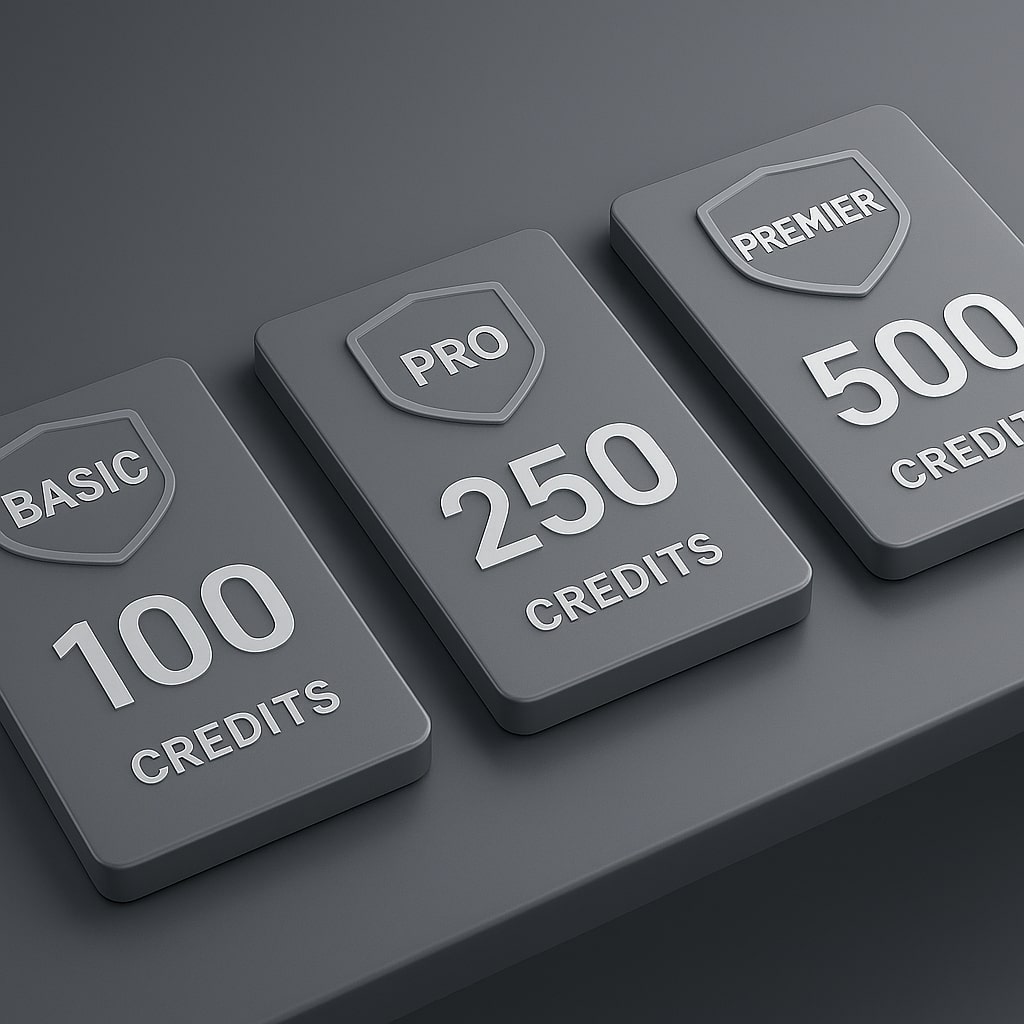
Credits per tier: 50/day free, 2,500/month Pro, 10,000/month Premier. Image create with Microsoft Copilot.
Pricing is credit‑based with three tiers. You’ll want to match expected output volume to credits so your monthly burn stays predictable. I recommend estimating by average minutes of final music per week, then adding a 20–30% buffer for iterations.
Current tiers and allowances:
- Basic (Free): 50 credits/day (≈ up to 10 songs/day), non‑commercial use.
- Pro: 2,500 credits/month, commercial use enabled.
- Premier: 10,000 credits/month, commercial use enabled.
Operational notes:
- Paid credits replenish monthly on your billing date; daily free credits still appear even when subscribed.
- If your team routinely extends tracks, budget more credits per deliverable; long one‑shot generations are often more efficient than multiple short extensions.
| Plan | Monthly Price (USD) | Credits | Approx. Songs / mo* | Commercial Use | Notes |
|---|---|---|---|---|---|
| Basic (Free) | $0 | 50 credits / day | ~10 songs / day | No | Shared queue; personal use only |
| Pro | $10 / mo (≈ $8 / mo billed yearly) | 2,500 credits / month | ~500 | Yes | Top-ups available; priority queue |
| Premier | $30 / mo (≈ $24 / mo billed yearly) | 10,000 credits / month | ~2,000 | Yes | For high-volume teams |
*Rule of thumb: ~10 credits per “generate” yields two songs ⇒ ≈5 credits per song. Actual usage varies with in-app edits (Extend/Replace). Plan details and pricing may change; always verify in app.
Rights, Ownership, and Commercial Use
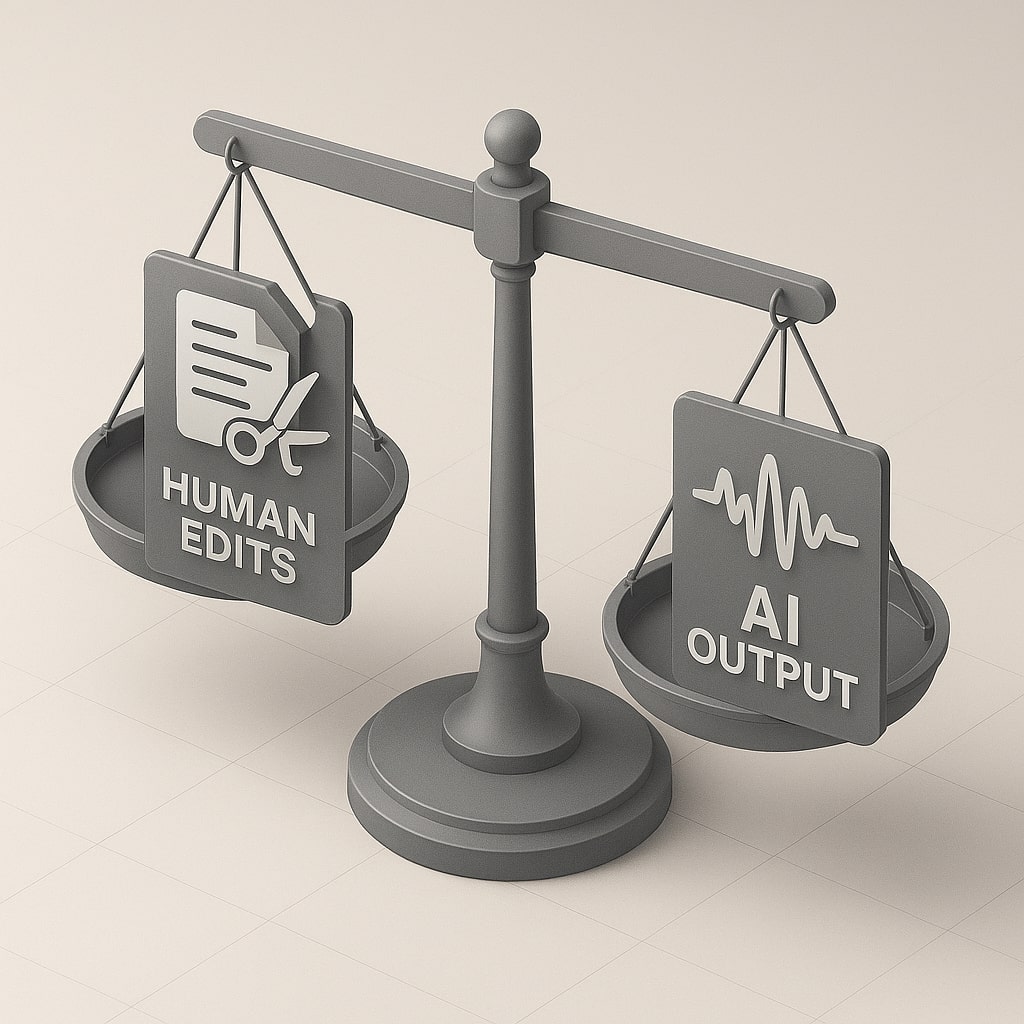
Commercial use needs paid tiers; copyright hinges on human authorship. Image create with Microsoft Copilot.
This is the part to read twice. Rights differ by plan and by what copyright law considers human authorship. If you produce monetized content, stay on a paid tier for the entire creation process.
What Suno’s policy means for you:
- Songs made on Basic are for non‑commercial use, with Suno retaining ownership.
- Songs made while on Pro/Premier include commercial use, and you’re considered the owner for those tracks; you keep commercial rights even if you later cancel.
- Upgrading later does not retroactively convert old free‑tier songs into commercial assets.
About copyrightability (United States): AI outputs are protectable only to the extent of your human authorship—for example, creative selection, arrangement, or substantial editing. Purely machine‑generated work, based solely on prompting, typically isn’t protected. Document your contributions: prompt drafts, structural notes, and edit decisions.
Practical guardrails: avoid dropping artist names, trademarked terms, or copyrighted lyrics into prompts; build direction with genre, mood, tempo, key, and instrumentation.
How to Use Suno AI (Step‑by‑Step)

A practical path from prompt to polished track in minutes. Image create with Microsoft Copilot.
If your goal is a reliable, repeatable workflow, start with a clear brief: use case, target length, mood, and mix role (foreground hook vs background bed). I’ll keep this pragmatic so you can ship faster.
- Pick the model: choose v4.5 for the latest vocal/genre fidelity; fall back to v3.5 on Basic.
- Write outcome‑based prompts: specify tempo (BPM), key, structure, and instrumentation (e.g., “110 BPM, A minor, verse‑chorus‑bridge‑outro, analog synth arps, wide pads, punchy snare”).
- Use the Lyrics box: add story beats and form (“Verse–Chorus–Verse–Chorus–Bridge–Outro”) for better adherence.
- Upload Audio (optional): hum or drop a short riff so Suno develops a track around a memorable motif.
- Generate two takes: shortlist the one with the best chorus or motif.
- Refine with in‑app tools: Extend for length, Replace Section to fix weak moments, Crop for clean endings; aim for a single long generation when possible.
- Export WAV/MP3/MP4: keep a prompt + edit log for compliance and reproducibility across campaigns.
Pro tips: give the model explicit musical roles (“lead muted guitar motif, soft piano counterline”), not just vibe words; for instrumentals, toggle Instrumental and describe the mix space you want.
Prompt Hygiene & Rights
- Commercial use: use paid tiers (Pro/Premier). Free/Basic is personal/non-commercial. Keep receipts and creation dates per track.
- Write original lyrics: use the Lyrics box; avoid pasting copyrighted text. Specify structure (e.g., intro→verse→chorus→bridge) and BPM.
- Avoid artist mimicry: describe genre/era/mood/instrumentation rather than “in the style of [Artist].”
- Longer first pass: try v4.5 single-pass (up to ~8 min) before using Extend to save credits and reduce section seams.
- Keep an audit trail: save prompts, lyrics, versions, and exported files for policy compliance and client handover.
- Not legal advice: always review platform ToS and distribution policies (YouTube/Spotify) before publishing.
Sound Quality and Generation Stability in 2025

Fuller mixes and faster renders; plan one‑shot long gens for reliability. Image create with Microsoft Copilot.
Compared with prior versions, v4.5 delivers fuller mixes with fewer metallic artifacts and cleaner high‑frequency content. Long tracks are more coherent, which helps when you need non‑fatiguing beds for 6‑ to 8‑minute explainers. That said, extension workflows can still be less predictable than one‑shot long renders, so plan structure in the initial generation and use Crop to trim.
What it means for your team: you can now prototype multiple sonic directions in a single afternoon and keep the one that fits your brand—without spending hours fixing transitions.
Ethics, Risk, and Where AI Music Policy Is Headed
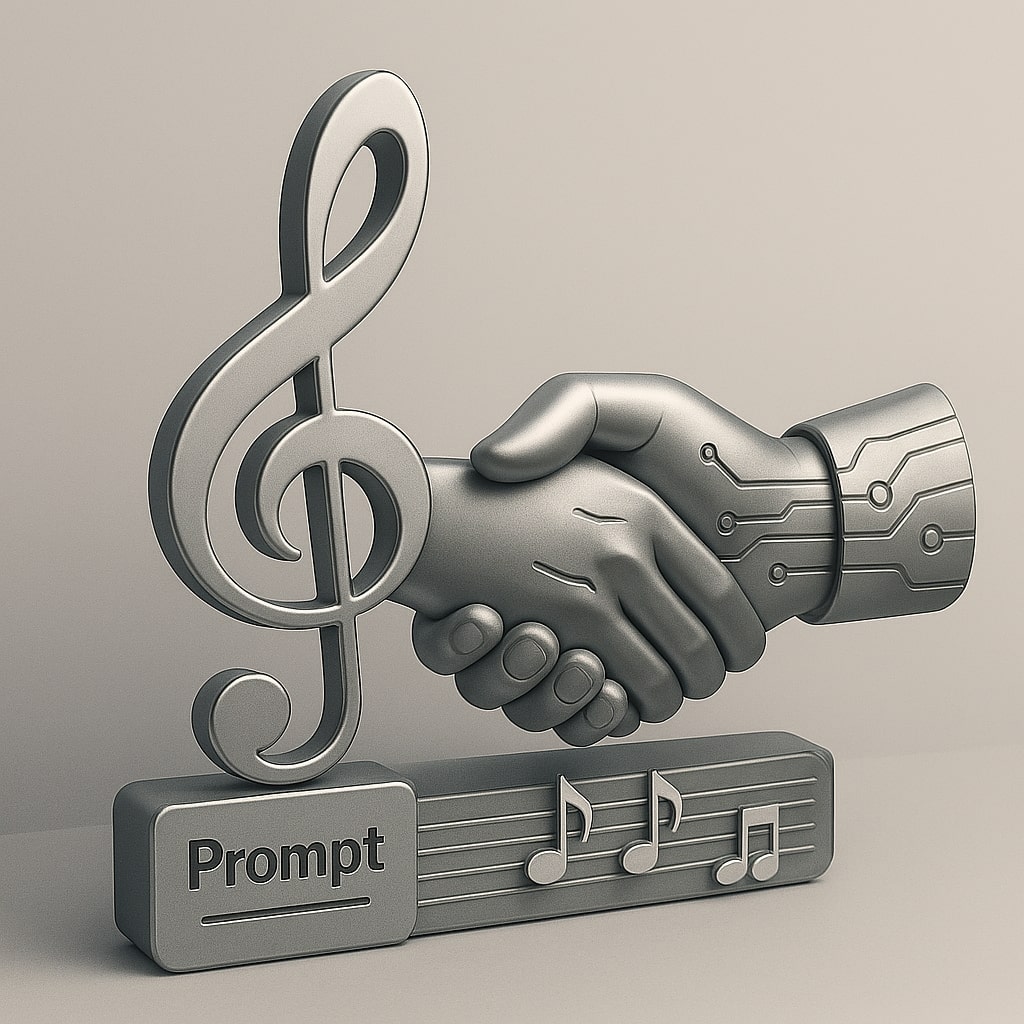
Licensing talks and fair‑use debates define AI music’s next chapter.
Labels and platforms are moving toward licensing and attribution frameworks for training data and voice likenesses. Expect more fingerprinting, opt‑in/opt‑out regimes, and clearer platform‑level guardrails. For now, your safest lane is original prompts, no mimicry, and clear human edits you can evidence later. If your brand’s risk tolerance is low, keep monitoring ongoing litigation and official guidance.
Commercial‑use quick facts (Pro/Premier, as of Aug 2025):
- The commercial‑use license applies to songs created while you are subscribed to Pro or Premier.
- Examples of allowed commercial uses: distribution to Spotify/Apple Music via your distributor; use in monetized YouTube/TikTok content; direct sales of songs; and sync licensing for TV, film, or games.
- Songs made on the Basic (free) tier are non‑commercial. Subscribing later does not automatically grant retroactive commercial rights to tracks made on Basic; Suno notes retroactive rights may be offered only in specific cases and are not guaranteed.
- If you cancel a paid plan, you retain commercial rights to songs created while subscribed; keep invoices and project logs as proof for distributors.
- If you wrote the lyrics, you own the lyrics regardless of plan (track ownership/commercial rights still depend on your plan and ToS compliance).
Your actionable stance: document process, avoid celebrity or artist‑style prompts, and keep stems/projects archived alongside briefs for auditability.
Who Should Choose Suno in 2025?

Best fits: solo founders, content teams, and indie devs who need fast, consistent music. Image create with Microsoft Copilot.
If you’re a solo founder, marketer, or indie developer, Suno is a force multiplier. It’s best for rapid ideation, consistent sonic branding, and dependable background scores. Larger teams can standardize prompt templates for series content and allocate Premier credits where output volume is highest.
Where it shines: YouTube educators, DTC brands testing ad variants, mobile game teams needing theme variations and loops with motif continuity.
Pricing in Practice (Real‑World Scenarios)
I like to frame budgets by deliverables per month and desired iteration counts. Here are simple patterns that match most small teams:
- YouTube educator (weekly uploads): Pro tier generally covers drafts + final mixes; reserve longer cues for sponsored episodes.
- DTC brand (campaign sprints): Premier suits multivariate testing (hooks, tempos, genres) across several ad angles in the same week.
- Game/app team (loops + themes): Premier plus Upload‑Audio workflows for motif‑driven identity; set a “no mimicry” policy and keep a prompt library for consistency.
| Scenario | Plan | Credits Used | Songs Produced | Monthly Cost | Cost / 100 Songs |
|---|---|---|---|---|---|
| Baseline (no extend) | Pro | 2,500 | ~500 | $10 | ~$2.00 |
| Baseline (no extend) | Premier | 10,000 | ~2,000 | $30 | ~$1.50 |
| Annual billing (discount) | Pro (yearly) | 2,500 | ~500 | ~$8 | ~$1.60 |
| Annual billing (discount) | Premier (yearly) | 10,000 | ~2,000 | ~$24 | ~$1.20 |
| Heavy edits (extend ×2) | Pro | ~3,500 | ~350–450 | $10 | ~$2.22–$2.86 |
Assumptions: ≈5 credits per song (10 credits generate → 2 songs). Extend/Replace may add credits; v4.5’s longer single-pass (up to ~8 min) can reduce Extend needs. “Cost per 100 songs” is a rough normalization for comparison only.
My Bottom Line for You
Suno in 2025 is fast, capable, and commercially usable on paid tiers. The v4.5 jump to long single‑pass tracks removes a historic friction point for ads, explainers, and games. If you work in tech and business, that means shorter production cycles and more consistent brand sound—so long as you keep rights, documentation, and prompt hygiene tight. If you’ve already tried v4.5, share what worked (and what didn’t) in the comments—I’d love to compare notes, answer questions, and swap prompt tricks with you.
Sources & References
- Suno Blog — v4.5 Update (May 1, 2025): Details on extended song length to ~8 minutes, faster generation, and quality improvements.
- Suno Help Center — Plan Types & Credits (June 26, 2025): Explains Basic (50 credits/day), Pro (2,500/month), Premier (10,000/month).
- Suno Help Center — Commercial vs Non‑Commercial Use (July 24, 2024): Examples of what counts as commercial (distribution, monetized channels, direct sales, sync).
- Suno Help Center — Can I distribute my songs to Spotify? (Feb 20, 2025): Confirms commercial license on Pro/Premier enables distribution; Basic is non‑commercial and not retroactive.
- Suno Help Center — If I subscribe, can I distribute songs from my free plan? (Aug 13, 2025): States no retroactive license by default; rare exceptions only for specific songs.
- Suno Help Center — Ownership & After Cancellation (Feb 20, 2025): You retain commercial rights to songs made while subscribed, even after canceling.
- Suno Help Center — Does Suno own the music I make? (Feb 20, 2025): Paid users own songs made while subscribed; Basic outputs remain non‑commercial with Suno retaining ownership.
- U.S. Copyright Office — AI & Copyrightability (Jan 29, 2025): Human authorship is required for protection of AI‑assisted works.
Link (main portal): https://www.copyright.gov/ai/ - RIAA vs Suno — Case Background (June 24, 2024 and updates): Litigation context relevant to risk and policy.
- Industry Coverage — Suno v4.5 improvements (2025): Roundups noting longer tracks, faster creation, and upgraded vocals.
FAQ (Frequently Asked Questions)
No. Basic is non‑commercial; Pro and Premier enable commercial use for songs created while subscribed.
With v4.5, single generations can reach around eight minutes; you can also Extend and then compile the whole song.
You can protect the human‑authored portions (selection, arrangement, substantial editing). Purely machine‑generated output based only on prompts typically isn’t copyrightable.
Avoid it. Build direction via genre, tempo, key, instrumentation, and mix roles. It’s safer and yields more original results.
As of mid‑2025, there’s no broadly advertised, fully documented public API. Check official pages for any updates.
